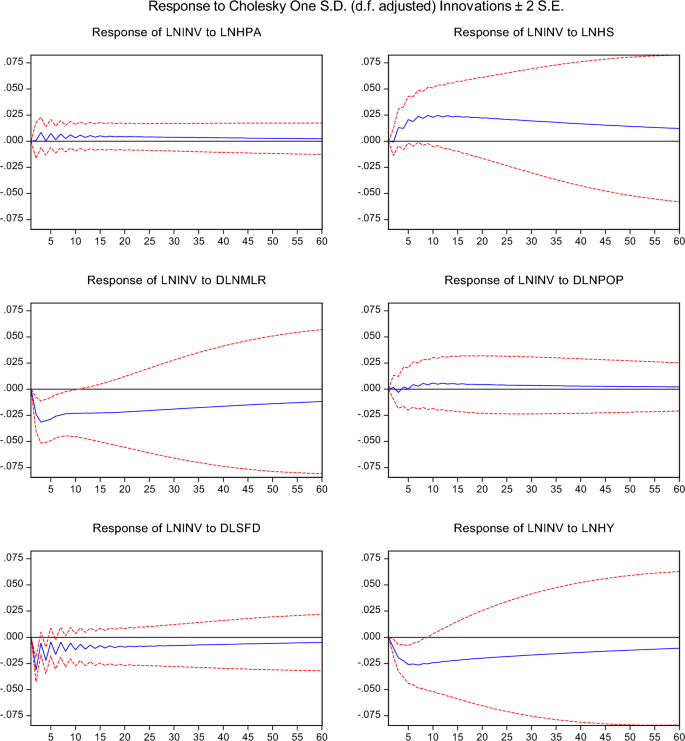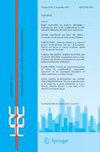负扣税对住房投资者投资决策的影响:以大悉尼为例
IF 1.8
3区 经济学
Q3 ENVIRONMENTAL STUDIES
引用次数: 1
摘要
迄今为止,尚无实证研究采用定量分析的方法考察负扣税等因素对住宅投资者决策的影响。我们应用结构向量自回归框架来追踪1991-2018年期间大悉尼住宅投资者对其主要驱动因素冲击的反应。我们发现了一个住宅投资者的配置文件,其中负扣税被用来缓冲低收益率期间的净租金损失,同时期望在持有期间实现资本增长。这支持了本研究的假设,即资本收益和负扣税分别与住宅投资者的数量呈正相关和负相关关系。此外,抵押贷款利率与投资者数量呈负相关关系,表明贷款利率上升会增加费用,导致收益降低。我们还发现,人口增长和住房供应增加可能会增加住宅投资者的数量。这些结果可以被税收和住房政策制定者用来重新调整与负扣税相关的税法,特别是对住宅投资。住宅投资者可能会利用这些信息做出更明智的决策,尤其是在收益率较低的时期。本文章由计算机程序翻译,如有差异,请以英文原文为准。

The impact of negative gearing on the investment decisions of housing investors: the case of Greater Sydney
Abstract To date, no empirical study has examined the impact of negative gearing and other factors on residential investors’ decisions using quantitative analysis. We applied a structural vector autoregression framework to trace the response of residential investors in Greater Sydney to shocks in its key drivers over the period 1991–2018. We discovered a residential investors’ profile in which negative gearing is being used to cushion any net rental loss during periods of low yield while expecting capital growth over their holding period. This supports the hypotheses of the study which posit that capital gains and negative gearing have a positive and negative relationship, respectively, with the number of residential investors. Additionally, a negative relationship between mortgage lending rate and number of investors is found, indicating a rising lending rate will increase expenses and contribute to low yield. We also found population growth and increased housing supply could increase the number of residential investors. These results could be used by tax and housing policy makers to recalibrate tax laws relating to negative gearing, especially for residential investment. Residential investors could potentially use this information for more informed decision making, particularly during periods of low yields.
求助全文
通过发布文献求助,成功后即可免费获取论文全文。
去求助
来源期刊
CiteScore
3.70
自引率
10.50%
发文量
63
期刊介绍:
The Journal of Housing and the Built Environment is a scholarly journal presenting the results of scientific research and new developments in policy and practice to a diverse readership of specialists, practitioners and policy-makers. This refereed journal covers the fields of housing, spatial planning, building and urban development. The journal guarantees high scientific quality by a double blind review procedure. Next to that, the editorial board discusses each article as well. Leading scholars in the field of housing, spatial planning and urban development publish regularly in Journal of Housing and the Built Environment. The journal publishes articles from scientists all over the world, both Western and non-Western, providing a truly international platform for developments in both theory and practice in the fields of housing, spatial planning, building and urban development.
Journal of Housing and the Built Environment (HBE) has a wide scope and includes all topics dealing with people-environment relations. Topics concern social relations within the built environment as well as the physicals component of the built environment. As such the journal brings together social science and engineering. HBE is of interest for scientists like housing researchers, social geographers, (urban) planners and architects. Furthermore it presents a forum for practitioners to present their experiences in new developments on policy and practice. Because of its unique structure of research articles and policy and practice contributions, HBE provides a forum where science and practice can be confronted. Finally, each volume of HBE contains one special issue, in which recent developments on one particular topic are discussed in depth.
The aim of Journal of Housing and the Built Environment is to give international exposure to recent research and policy and practice developments on the built environment and thereby open up a forum wherein re searchers can exchange ideas and develop contacts. In this way HBE seeks to enhance the quality of research in the field and disseminate the results to a wider audience. Its scope is intended to interest scientists as well as policy-makers, both in government and in organizations dealing with housing and urban issues.

 求助内容:
求助内容: 应助结果提醒方式:
应助结果提醒方式:


